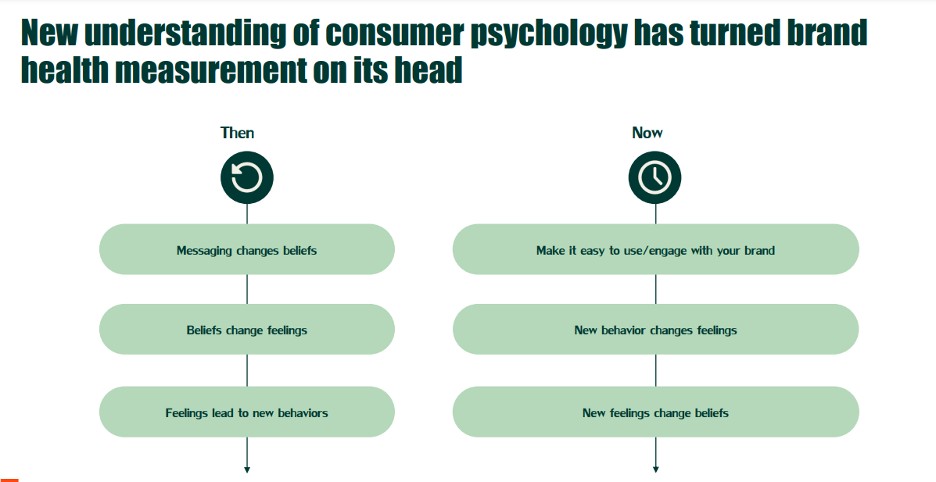By Allie Holmes
I recently attended the Quirk’s Chicago Event 2023, one of the premier industry conferences for marketing research and insights professionals, and one recurring theme in particular struck a chord for me. While the event was full of interesting and educational sessions, as is typical, the discussions around the importance and emergence of online communities as a mechanism for extracting deep consumer insights and sentiments tracked with my own experience and the feedback we’re getting from clients.
One client project in particular could have, itself, been a case study presented by one of the event’s session leaders. This private academy that provides high schoolers with exceptional athletic and educational opportunities has been leveraging the insights gleaned from year-long online community initiatives that transcend what have been historically deployed by brands gathering consumer feedback and intelligence.
While not entirely new and novel to the research world, what is being explored are new approaches to making these online communities more immersive, more conversational, longer in duration, and more deeply connected to those participating in them. My observations at Quirk’s Chicago did well to reinforce my own belief that we will see much more of such methodologies in years to come, especially as consumer demographics and psychographics continue to evolve.
What Intelligence Can Online Communities Yield that Other Research Tactics Do Not?
As I mentioned, one novel approach the academy took to standing up its online community was to “play the long game,” approaching the research initiative as an ongoing and continuous process — one that would endure for a year or longer. But the other decidedly unique framework for its study was to make the initiative more inclusive, more immersive and more conversational than, say, pulse surveys. This academy was in search of very detailed, very rich insights into the sentiments and opinions of its students and parent families. More than snapshots in time, or instant reactions to specific prompts about particular topics or experiences, what was needed were complete, open and honest expressions of customer beliefs, emotions and conversational reflections.
Rather than the more standard approach of standing up an online forum, inviting 20 or so participants to join for a few days, and asking very specific, pointed questions with limited opportunity for open-response narratives, the academy was looking to create something that would, in some ways, resemble an online discussion board that one might find on a university campus. The prompts were less questions than they were topics — conversation starters that would nurture discussion and limitless comments, reactions and open dialogue. What this approach presented was the opportunity to understand the authentic opinions of its constituents, unfiltered by questionnaire construct or close-ended response formats, such as multiple choice, numerical ratings, and short-form responses.
True, this data may take more human oversight to analyze, mine and decipher, but the richer insights, the deeper intelligence, and the closer connections to the audience you’re looking to understand and serve are worth the extra investment in time and talent. The limitations that dashboards alone present is that, what they offer in terms of numerical presentment of audience sentiment or feedback they forfeit in truly actionable intelligence. Quantitative data analysis alone will leave questions unanswered — most importantly, those that reveal the WHYs behind the WHATs being expressed. Surveys alone, for example, provide a close-ended destination, while an online discussion is potentially evergreen and ongoing, and it invites whole communities into a single conversation or participant reaction. These deeper, more open, and ongoing conversations reveal broader truths and more detailed analytics at once.
As constituent demographics will naturally and inevitably evolve over time, it is important that insights initiatives and research tools evolve along with them. For a high school academy, in this example, that audience might turn over every single year, as new students replace graduating families. What’s bound to result in this category and most any is a customer profile that gets younger over time. The generation behind the current customer base is likely to be less prone to entrenched brand loyalty than those previous, as data industry-wide has suggested, and the barriers to switching brands are lowered and eliminated through technology.
Six Intrinsic Benefits and Outcomes of Using Online Communities to Extract Rich Customer Insights
It was long held, in the advertising industry, that impactful messaging had the ability to change audience beliefs; beliefs could, in turn, change feelings; and that feelings could ultimately change behaviors and influence sales. Nowadays, much of that has been turned on its head. In the modern media environment, it’s just as likely (if not more so) that behaviors — including customer interactions with a brand — will change audience beliefs; and those influenced beliefs will impact brand loyalty.

The takeaway, both from the Quirk’s event and my own experience, is that companies need to make it easy for constituents to engage with the brand in order to facilitate positive influence on beliefs and the complete understanding thereof. And one of the best ways to offer that opportunity for dialogue and conversation is through the deployment of online communities.
Online communities, when fully integrated and leveraged, offer these benefits over research tools that are less immersive, open-ended or dynamic:
- More immersive communication channels yield richer insights and deeper understanding.
- Open-ended conversations and community discussions reveal more authentic participant opinions and sentiments.
- Ongoing dialogue with communities affords brands the opportunity to dig deeper, delve further into the WHYs behind the WHATs, and to engage on an emotional level with the community.
- Online communities allow researchers to incorporate multiple methodologies and tools into a single platform, including both quantitative and qualitative tools: surveys, responses, and rating systems along with the open-ended responses, community participation and transparent forums.
- Conversations often lead to closer connections between the brand and its customer base, as customers feel heard, and decision makers see rich insights and analysis they can use to inform product decisions and messaging.
- Unlike pulse surveys, online communities present the opportunity to ask questions in multiple ways and formats, and enable participants to engage in different ways, such as…
- Participants can provide media-rich feedback or experiences, such as photos or videos of recent brand interactions.
- Analysts can observe community interactions in real time and ongoing, potentially identifying how brand advocates and/or detractors interact with each other, either in support of a brand or against it.
- Stakeholder conversations can be folded in and cross-analyzed with authentic, unfiltered and deeply rich insights as expressed by constituents in their own language, not just through the vocabulary and constructs of a survey.
Though it certainly wasn’t the only topic of focus at Quirk’s Chicago, it was encouraging to see so much dialogue around the use of online communities amongst marketing researchers and insights professionals. Especially as we continue to read so much about the power of artificial intelligence to facilitate data gathering, it is nice to see colleagues show an appreciation for the tremendous power that exists with human intelligence.
Online communities will naturally necessitate human interaction and oversight, but what is to be gained is a true human understanding of the authentic humans whose loyalty we wish to nurture and influence. In the end, it is the combination of artificial intelligence and human intelligence that will result in augmented intelligence — the most powerful and authentic representation of human behaviors and opinions.
Allie Holmes serves as senior market analyst for Martec, with specific emphasis on customer experience research and initiatives. Use the Contact Us form below to get in touch.




